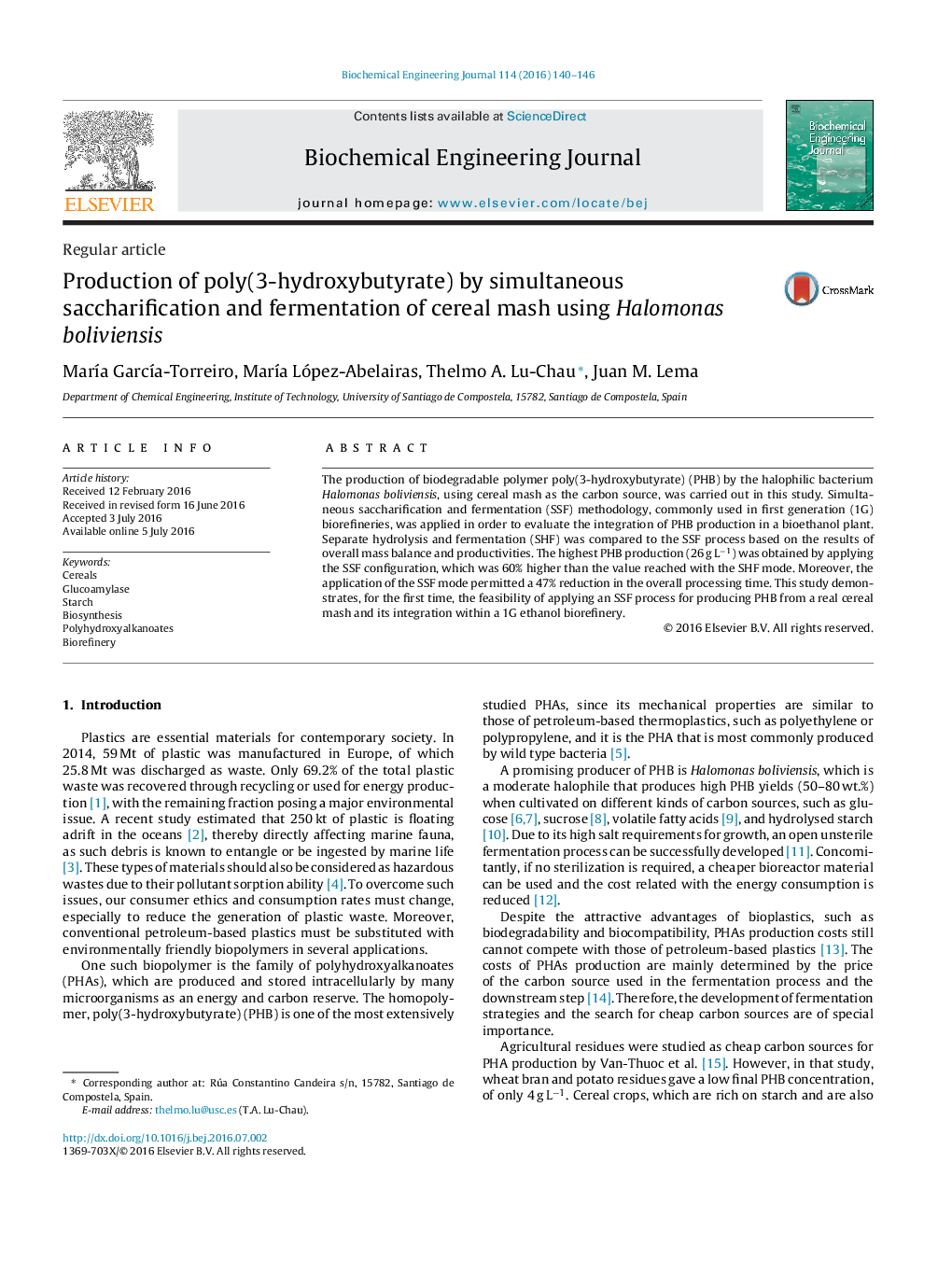| Article ID | Journal | Published Year | Pages | File Type |
|---|---|---|---|---|
| 2683 | Biochemical Engineering Journal | 2016 | 7 Pages |
•Integration of the PHA production into a first generation bioethanol plant was studied.•Separate and simultaneous hydrolysis and fermentation configurations were tested.•SSF configuration reported a higher PHB yield (19.1–23.5%) than SHF (9.8%).•The highest productivity and concentration of PHB were also obtained with SSF.
The production of biodegradable polymer poly(3-hydroxybutyrate) (PHB) by the halophilic bacterium Halomonas boliviensis, using cereal mash as the carbon source, was carried out in this study. Simultaneous saccharification and fermentation (SSF) methodology, commonly used in first generation (1G) biorefineries, was applied in order to evaluate the integration of PHB production in a bioethanol plant. Separate hydrolysis and fermentation (SHF) was compared to the SSF process based on the results of overall mass balance and productivities. The highest PHB production (26 g L−1) was obtained by applying the SSF configuration, which was 60% higher than the value reached with the SHF mode. Moreover, the application of the SSF mode permitted a 47% reduction in the overall processing time. This study demonstrates, for the first time, the feasibility of applying an SSF process for producing PHB from a real cereal mash and its integration within a 1G ethanol biorefinery.
Graphical abstractFigure optionsDownload full-size imageDownload as PowerPoint slide
